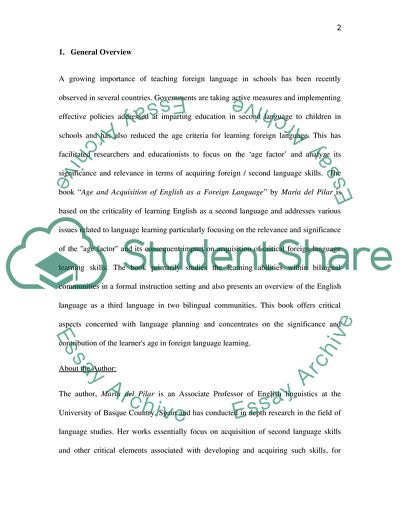Cite this document
(“Age and the Acquisition of English as a Foreign Language. Editied by Book Report/Review”, n.d.)
Age and the Acquisition of English as a Foreign Language. Editied by Book Report/Review. Retrieved from https://studentshare.org/miscellaneous/1554423-age-and-the-acquisition-of-english-as-a-foreign-language-editied-by-maria-del-pilar-garcia-mayo-and-maria-luisa-garcia-lecumberri-2003
Age and the Acquisition of English as a Foreign Language. Editied by Book Report/Review. Retrieved from https://studentshare.org/miscellaneous/1554423-age-and-the-acquisition-of-english-as-a-foreign-language-editied-by-maria-del-pilar-garcia-mayo-and-maria-luisa-garcia-lecumberri-2003
(Age and the Acquisition of English As a Foreign Language. Editied by Book Report/Review)
Age and the Acquisition of English As a Foreign Language. Editied by Book Report/Review. https://studentshare.org/miscellaneous/1554423-age-and-the-acquisition-of-english-as-a-foreign-language-editied-by-maria-del-pilar-garcia-mayo-and-maria-luisa-garcia-lecumberri-2003.
Age and the Acquisition of English As a Foreign Language. Editied by Book Report/Review. https://studentshare.org/miscellaneous/1554423-age-and-the-acquisition-of-english-as-a-foreign-language-editied-by-maria-del-pilar-garcia-mayo-and-maria-luisa-garcia-lecumberri-2003.
“Age and the Acquisition of English As a Foreign Language. Editied by Book Report/Review”, n.d. https://studentshare.org/miscellaneous/1554423-age-and-the-acquisition-of-english-as-a-foreign-language-editied-by-maria-del-pilar-garcia-mayo-and-maria-luisa-garcia-lecumberri-2003.


